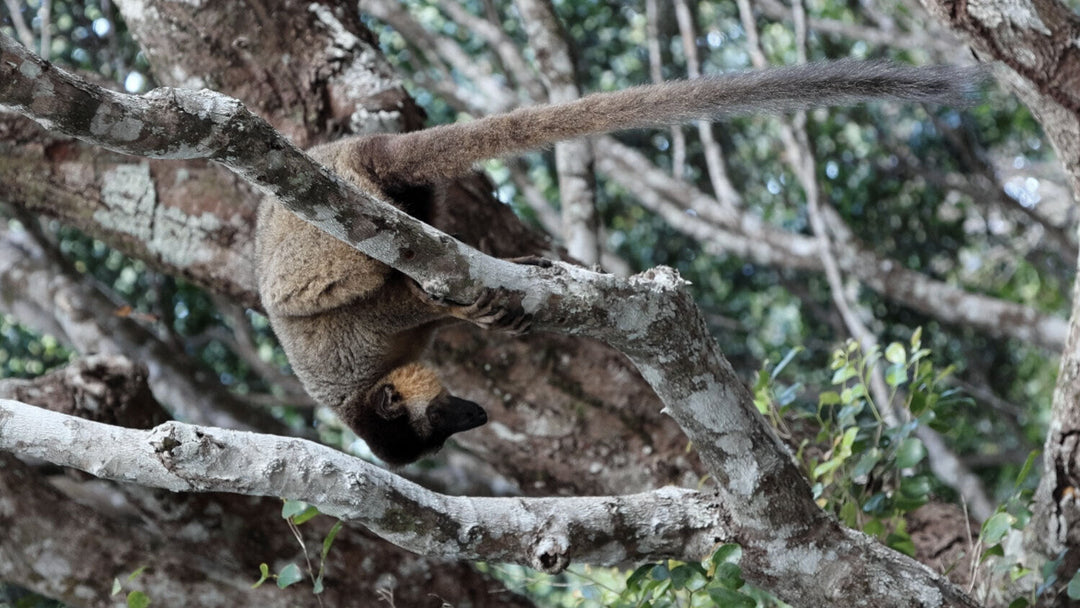Why do stoats turn white in winter?
Stoats exhibit a captivating adaptation by transforming their fur colour from a rich brown to a pristine white – known as ermine - during the winter months. This article explores how and why stoats undergo this seasonal transformation. We also share some top tips for monitoring stoats with trail cameras.
Physical Characteristics of Stoats
Before delving into the reason behind their winter colour change, let's first understand the physical characteristics of the stoat (Mustela erminea). These small mammals have long, slender bodies and measure around 35 to 45cm from nose to tail tip. Stoats are efficient predators, owing to their fast movement, combined with a keen sense of hearing and excellent vision. They have a distinctive, black-tipped tail which helps to discern a stoat from other similar mustelid species, such as weasels. Learn more about the differences between stoats and other mustelids in our visual guide to British mustelids.
Understanding Stoat Adaptation
In cooler climates, such as northern England and Scotland, some stoats turn white in the winter months, whereas in the warmer climate of southern England, they usually maintain a brown coat year-round.
Seasonal Camouflage
The primary purpose of the stoat's colour change is to provide effective camouflage in different seasons. During winter, when the environment is blanketed in snow, white fur helps the stoat blend seamlessly with its surroundings, making it almost invisible to prey species and potential predators. This adaptation increases their chances of successfully hunting and surviving in challenging winter conditions.
The Role of Melanin
Melanin, a pigment responsible for hair and skin colour, plays a key role in the stoat's ability to change colour. The melanocytes in their fur produce two types of melanin: eumelanin, responsible for dark pigmentation, and pheomelanin, responsible for lighter tones. The balance between these pigments determines the overall coloration of the fur.
Moulting and the Piebald Phase
Stoats undergo a process of moulting, where they shed their fur to allow new hair growth. During the moulting process, the stoat's summer fur gradually gives way to its winter coat. This transition involves the growth of longer, thicker guard hairs that either maintain a brown appearance in warmer southern climates, or sometimes shift to a pure white colour in cooler northern climates. As winter approaches, the stoat's old brown fur falls out, revealing the new fur.
For the stoats that turn white, during the moult they appear ‘piebald’ with mottled dark and light fur patches. These distinctive markings can prove useful to those monitoring stoats with trail cameras, making it much more possible to identify individuals.
Changing Colour: Environmental Triggers
The combination of photoperiod and temperature are likely at play, influencing the timing and extent of the stoat's colour change.
As the photoperiod (length of daylight) becomes shorter in winter, it acts as a trigger for the stoats’ colour change. This change in photoperiod is also accompanied by colder days, so the need for a warmer winter coat is an essential part of survival.

Stoat with a brown coat outside of the winter months
Top Tips for Monitoring Stoats with Trail Cameras
Stoats live in a variety of habitats, ranging from woodlands and grasslands to gardens and farmland. They navigate their surroundings with a zig-zagging motion, exploring large areas. Despite being a widespread species, they can be challenging to catch on a trail camera.
Camera trapping stoats is often most successful near features such as hedgerows, drystone walls, fallen trees and woodland edges, as they tend to follow linear features and prefer to avoid venturing too far into open spaces. Consider which features are dividing up habitats; to a stoat, these features serve as paths through an area. Use those features as focal points for a trail camera.

Stoat Conservation
Stoats are widespread throughout Britain and Ireland and are not currently considered endangered or threatened. However, it is crucial to monitor the impact of climate change on their habitats and prey populations to ensure their long-term survival.
FAQs
Are stoats the only animals that change colour in winter?
No, there are several other animals that undergo colour change in winter, such as the Arctic fox, ptarmigan, and mountain hare. These adaptations serve a similar purpose of seasonal camouflage.
Do all stoats turn white in the winter?
No, the colour change in a stoat’s fur is related to winter conditions. For example, in Britain, stoats are more likely to turn white in northern England and Scotland where the winters are colder.
Are stoats in danger due to climate change?
While stoats are adaptable, climate change will likely impact their habitats and prey availability, which may affect stoat populations. Monitoring and conservation efforts are essential to understand and mitigate these potential threats.
What do stoats eat?
Stoats have a varied carnivorous diet. Their main source of food is often rabbits, but their diet includes voles, mice, rats, birds and eggs.
Where do stoats make their nests?
Stoats often den in the burrows of their prey, such as rabbits or rodents. They also make dens in cavities such as drystone walls and tree hollows.
Where are stoats most commonly found?
Stoats live in a variety of habitats including woodlands, grasslands and farmland.


